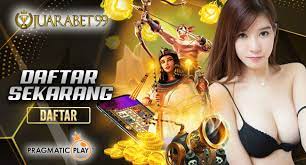The Joker card, often depicted as a whimsical character in brightly colored garb, is a unique and intriguing element in a standard deck of playing cards. While it originally served a specific purpose in card games, the jokercard has transcended its initial role, evolving into a multifaceted symbol in various cultural contexts.
Historical Background
The origins of the Joker card date back to the mid-19th century in the United States. It was initially introduced as a wild card in the game of Euchre, which required a trump card that could outplay others. The Joker’s playful design, typically featuring a jester or clown figure, reflected its role in games as a card that could take on any value, adding an element of unpredictability and excitement.
As card games evolved, the Joker card began to appear in many games beyond Euchre, including Poker, Rummy, and Canasta. Its versatility made it a popular addition, allowing players to strategize and adapt their gameplay in unexpected ways.
The Joker in Popular Culture
Beyond its role in card games, the Joker has become an iconic figure in popular culture, especially through its association with the Batman franchise. The character of the Joker, a villainous counterpart to Batman, has been depicted in various forms of media, including comic books, movies, and television series. With his chaotic nature, twisted sense of humor, and vibrant appearance, this iteration of the Joker has solidified his status as a cultural icon.
In addition to the comic book realm, the Joker’s imagery has been co-opted in various art forms, fashion, and merchandise, symbolizing rebellion, chaos, and unpredictability. The duality of the Joker, embodying both humor and menace, resonates with audiences, making it a rich subject for artistic interpretation.
Symbolism of the Joker
The Joker card is often seen as a symbol of duality, representing both chaos and order. In many cultures, the jester figure serves as a reminder of the thin line between sanity and madness. The Joker’s unpredictable nature can be interpreted as a reflection of life’s uncertainties, encouraging individuals to embrace spontaneity and the unexpected.
Moreover, in some contexts, the Joker represents freedom from societal norms and constraints. The character’s ability to break rules and defy expectations embodies a sense of liberation, resonating with those who feel constrained by convention.
Conclusion
The Joker card is much more than just a playing card; it is a powerful symbol that has evolved over time. From its origins in the game of Euchre to its prominent role in popular culture, the Joker embodies themes of unpredictability, duality, and freedom. Whether used in games or as a cultural icon, the Joker continues to captivate and inspire, reminding us of the complexities of life and the joy of embracing the unexpected.




